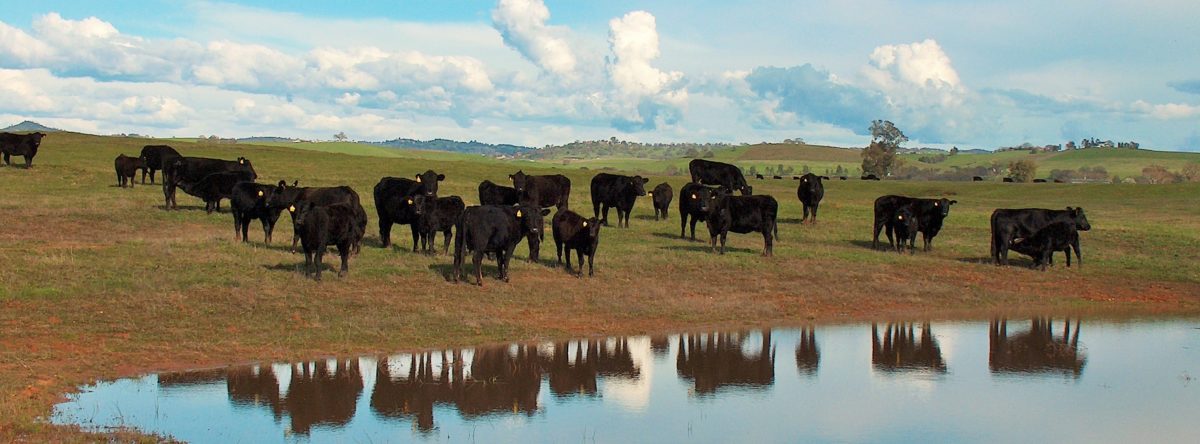The California Department of Fish and Wildlife (CDFW) has declared this week (June 3-11) California Invasive Species Action Week (CISAW). CDFW invites all Californians to volunteer to partake in the fight against invasive species that are impacting our natural resources throughout the state. “The goals of the CISAW are to increase public awareness of invasive species issues and promote public participation in the fight against California’s invasive species and their impacts on our natural resources,” (“California Invasive Species Action Week” 2017).
Part of Wildlands’ mission to protect our properties in perpetuity consists of invasive species intervention throughout the year to preserve the natural habitats we establish and resources we protect. Wildlands uses a variety of methods for control that include mechanical/physical, biological (grazing), and chemical control measures.
With a herd of over 2,000 cattle, Wildlands is able to use grazing as an invasive species prevention and maintenance method on multiple sites throughout the state. Grazing helps reduce existing invasive populations and can help reduce future populations by depleting the seed bank that exists on our sites. For example, Wildlands has grazed the Aitken Ranch Mitigation Project in Placer County to combat Medusahead (Taeniatherum caput-medusae), an invasive plant that is known to crowd out native species. Wildlands also uses grazing on almost all of our vernal pool sites to minimize encroachment of invasive species on the pools, like at the Toad Hill Ranch and Locust Road Mitigation Banks in Placer County. We have also implemented grazing against Yellow Star Thistle (Centaurea solstitialis) at the Orchard Creek Conservation Bank and Orchard Creek Vernal Pool Mitigation Preserve in Placer County with good success.
In addition to grazing, Wildlands uses other techniques to remove and/or prevent invasive species, such as chemical control measures like spraying, and removal of plants by hand. We have sprayed for Purple Star Thistle (Centaurea calcitrapa) at the North Suisun Mitigation Bank in Solano County, sprayed for Yellow Star Thistle on properties throughout Placer County, and sprayed and manually dug up Giant Reed (Arundo donax) at the San Luis Rey Wetland Mitigation Bank in San Diego County. We have also removed Waxy Mannagrass (Glyceria declinata) from vernal pools at the Toad Hill Ranch Mitigation Bank by hand.
Along with invasive plant species, Wildlands works to remove invasive animal species when possible, like the American Bullfrog (Lithobates catesbeianus). “Both tadpoles and adult bullfrogs are voracious feeders and can consume benthic algae and the eggs or offspring of many species of native invertebrates and vertebrates including fishes, reptiles, amphibians, water birds, and even small mammals. It is also believed that bullfrogs, once established, can compete directly with native birds, reptiles, amphibians, and fishes for limited food resources. In some cases, they also may have significant effects on aquatic vegetation,” (Snow & Witmer 2010). Bullfrogs have been linked largely to the listing of the endangered California Tiger Salamander (Ambystoma californiense) as a predator, which Wildlands protects on various sites including our Deadman Creek and Great Valley Conservation Banks in Merced County, Sand Creek Conservation Bank in Tulare County, and Tolle Rodman Ranch Conservation Bank in Fresno County. Bullfrog removal on these sites is imperative to the success and recovery of the salamander.
“Hundreds of invasive plants and animals have already established in California and are rapidly spreading each year. These invaders are negatively impacting our waters, our native plants and animals (some of them rare, threatened, or endangered), our agriculture, our health, our economy, and our favorite recreational places,” (“California Invasive Species Action Week” 2017). To volunteer to take action and find an event near you, please view the Schedule of events on the CDFW website.
For more updates on Wildlands’ conservation efforts, please sign up for our Newsletter.
“California Invasive Species Action Week.” California Department of Fish and Wildlife, Habitat Conservation Planning Branch. 6 June 2017. <https://www.wildlife.ca.gov/Conservation/Invasives/Action-Week>.
Snow, Nathan P., and Gary Witmer. Proc. 24th Vertebrate Pest Conference. Publication. N.p.: n.p., 2010. American Bullfrogs as Invasive Species: A Review of the Introduction, Subsequent Problems, Management Options, and Future Directions. University of California, Davis. Web. 6 June 2017. <https://naldc.nal.usda.gov/download/49725/PDF>.




